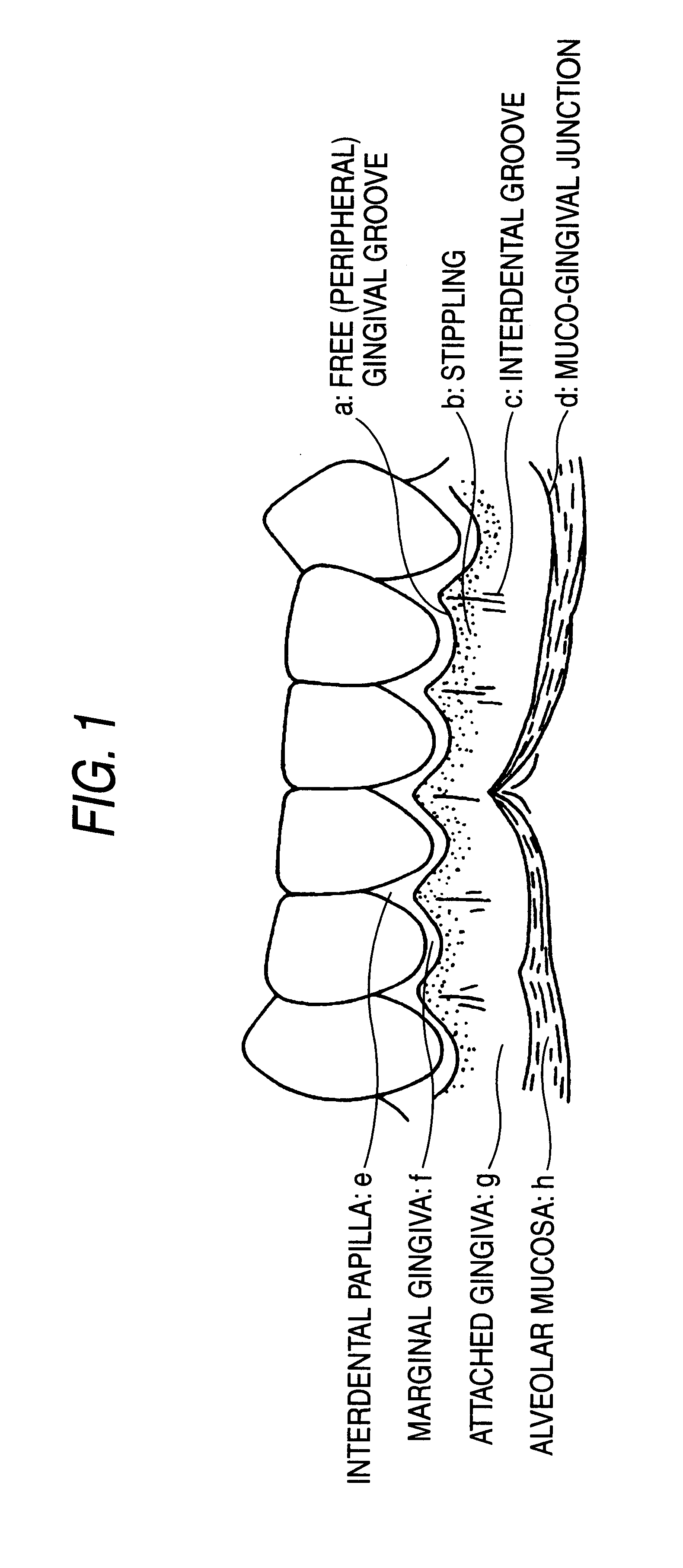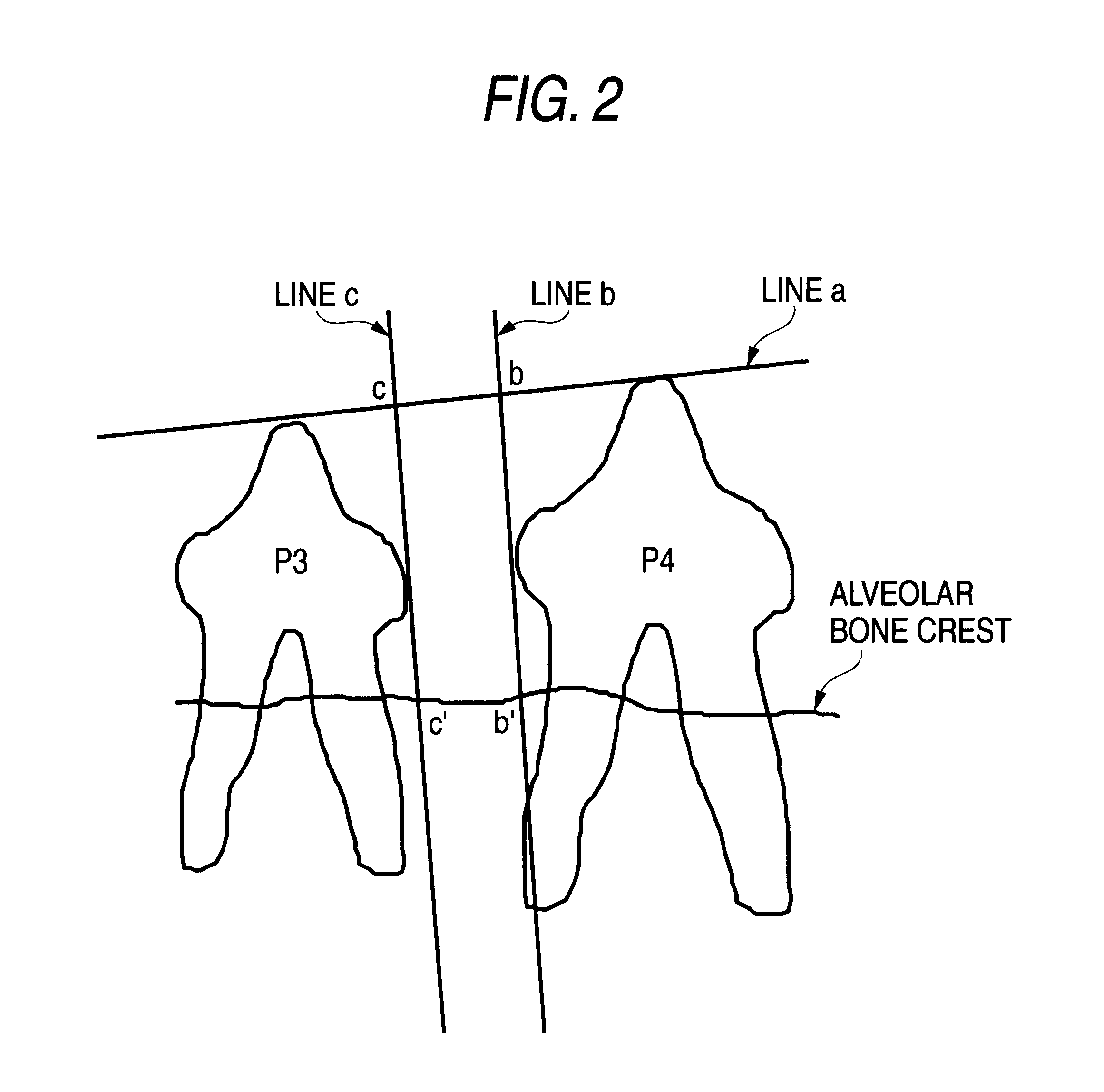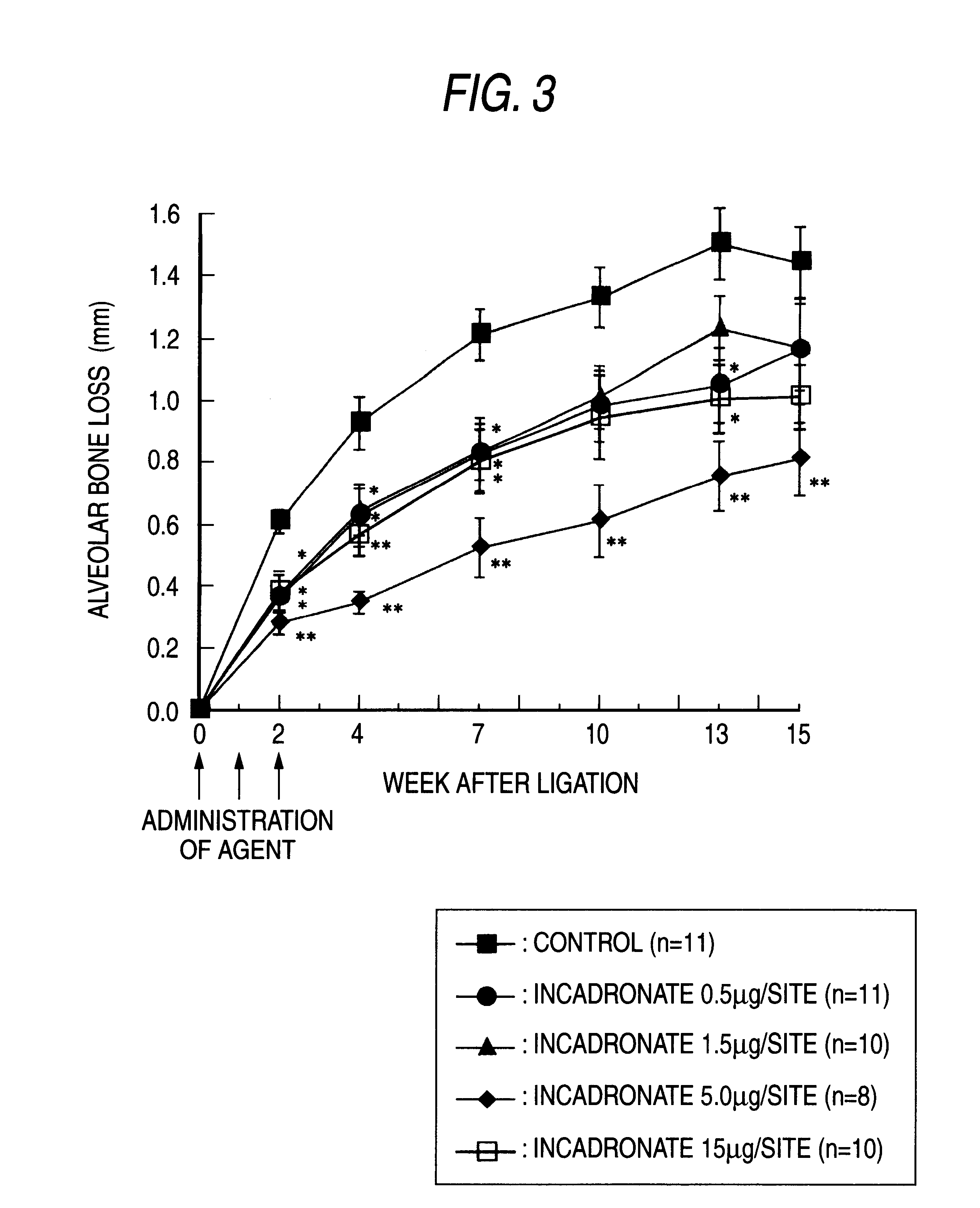Remedies for periodontosis
a periodontal disease and periodontal disease technology, applied in the field of periodontal disease treatment, can solve the problems of unsuitable action, no reports to date on the use of alveolar bone resorption inhibitors, and difficulty in predicting the dosage, dosage, and administration method of topical administration
- Summary
- Abstract
- Description
- Claims
- Application Information
AI Technical Summary
Problems solved by technology
Method used
Image
Examples
example 2
FORMULATION EXAMPLES
formulation example 1
A 3.3, 10.0, 33.3 or 100 .mu.g portion of incadronate was dissolved in saline and adjusted to 1 ml, and this was packed in a one ml capacity cartridge to obtain a dental cartridge containing the pharmaceutical composition of the invention.
formulation example 2
A 3.3, 10.0, 33.3 or 100 .mu.g portion of incadronate and either of 42.6 mg of xylitol, 51 mg of mannitol, 51 mg of sorbitol or 21 mg of glycine hydrochloride as a isotonicity agent were dissolved in saline and adjusted to 1 ml. By packing this in a one ml capacity cartridge, a dental cartridge containing the pharmaceutical composition of the invention was obtained.
PUM
| Property | Measurement | Unit |
|---|---|---|
| Dimensionless property | aaaaa | aaaaa |
| Dimensionless property | aaaaa | aaaaa |
| Dimensionless property | aaaaa | aaaaa |
Abstract
Description
Claims
Application Information
 Login to View More
Login to View More - R&D
- Intellectual Property
- Life Sciences
- Materials
- Tech Scout
- Unparalleled Data Quality
- Higher Quality Content
- 60% Fewer Hallucinations
Browse by: Latest US Patents, China's latest patents, Technical Efficacy Thesaurus, Application Domain, Technology Topic, Popular Technical Reports.
© 2025 PatSnap. All rights reserved.Legal|Privacy policy|Modern Slavery Act Transparency Statement|Sitemap|About US| Contact US: help@patsnap.com



